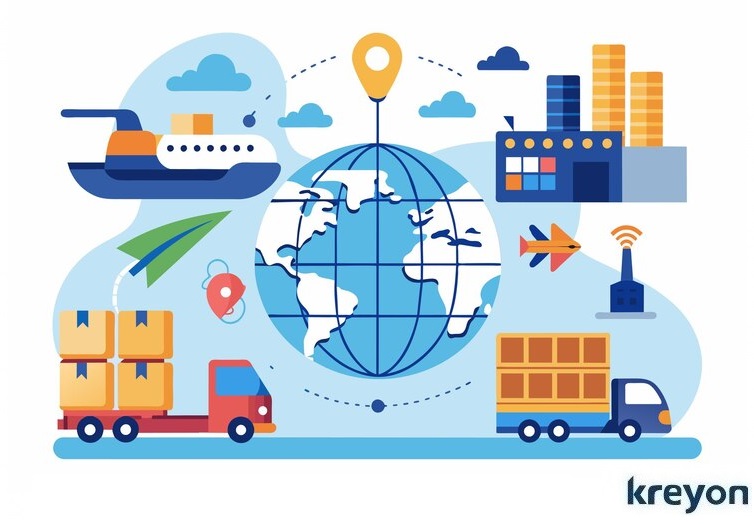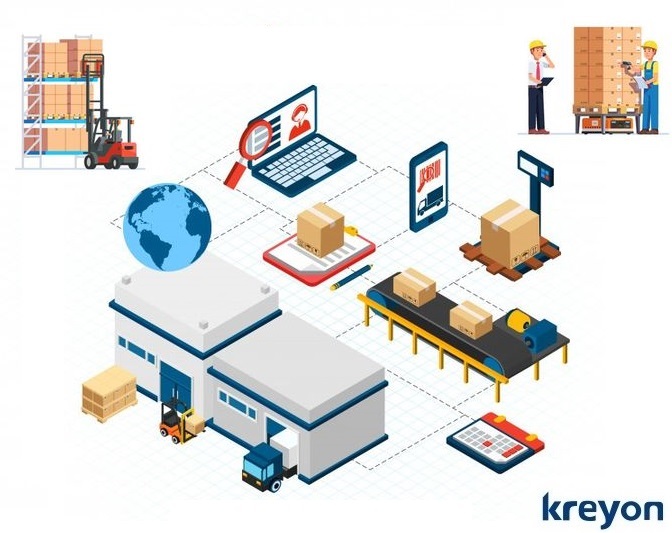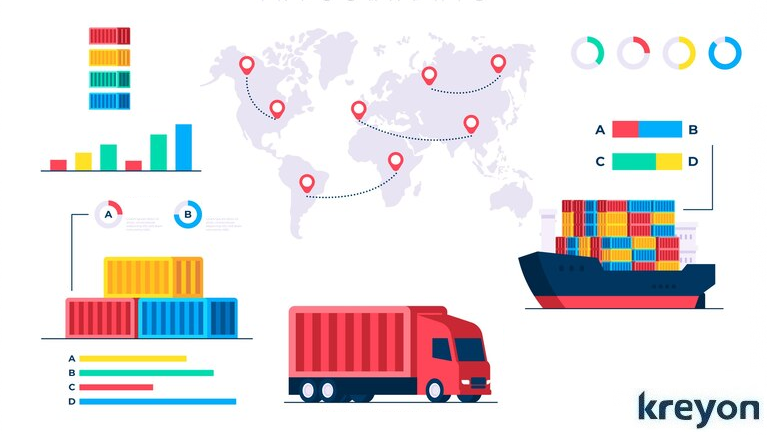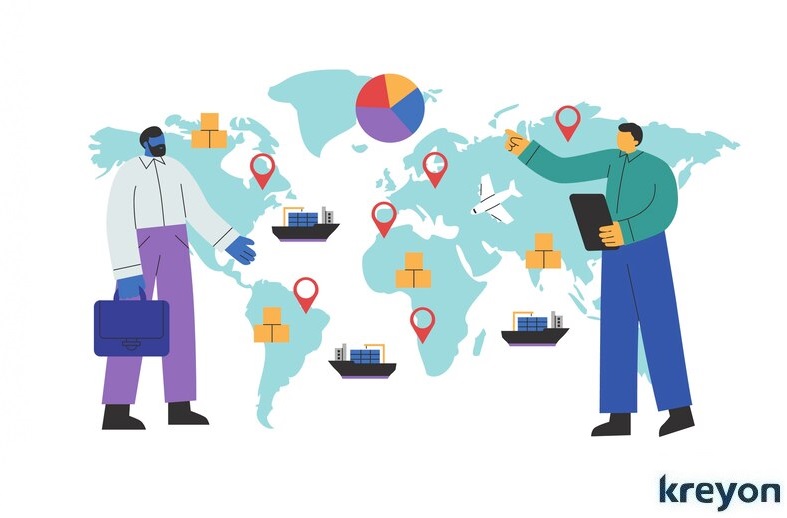Supply Chain Automation: Here are Top Tasks in Your Supply Chain You Can Automate Today

In an era where every moment counts, the heartbeat of global commerce relies on the synchronized dance of intricate supply chains. Nowhere is this more evident than in the realm of supply chain management.
In SCM, every delay, error, or inefficiency can have cascading effects throughout the entire operation. Fortunately, advancements in technology have paved the way for supply chain automation, allowing businesses to streamline processes, reduce costs, and improve overall performance.
In this article, we’ll explore the top repetitive tasks in your supply chain that you can automate today to stay ahead of the curve. Here’s a breakdown of key features within supply chain automation that can transform your business:
Data Acquisition and Integration
According to a report by McKinsey & Company, companies that automate order processing can reduce processing times by up to 90%.
Optical Character Recognition (OCR): Effortlessly convert physical documents (invoices, purchase orders) into digital data, eliminating manual entry errors and saving time.
Sensor Integration: Gather real-time data from sensors on equipment, inventory, and environmental conditions for improved monitoring and decision-making.
Internet of Things (IoT) Connectivity: Connect devices and machines across your supply chain, enabling seamless data collection and communication for enhanced visibility.
Order Processing: Manual order processing can be time-consuming and error-prone. By implementing automated order processing systems, businesses can reduce processing times and minimize errors, leading to faster order fulfillment and improved customer satisfaction.
Real-time Inventory

Keeping track of inventory levels, replenishment orders, and stockouts can be a logistical nightmare. Automated inventory management systems use real-time data to track inventory levels, forecast demand, and automate replenishment orders, ensuring optimal inventory levels at all times.
Research by Aberdeen Group found that companies with automated inventory management systems experience 20% fewer stockouts and reduce excess inventory by 30%.
Automated Inventory Replenishment: Utilize software to automatically generate purchase orders based on real-time stock levels and demand forecasts, preventing stockouts and overstocking.
Warehouse Management Systems (WMS): Optimize warehouse operations with features like automated storage and retrieval systems (AS/RS), inventory tracking, and picking route optimization, leading to faster fulfillment times.
Demand Forecasting Tools: Analyze historical sales data, market trends, and seasonal variations to predict future demand with greater accuracy, enabling better inventory planning and resource allocation.
Supply Chain Visibility and Analytics
Analyzing data and generating reports manually can be time-consuming and error-prone. Automated data analytics and reporting systems use advanced analytics tools and visualization techniques to analyze data, generate insights, and create actionable reports, empowering businesses to make data-driven decisions.
Real-Time Tracking and Monitoring: Track the location and status of goods in real-time, providing complete visibility throughout the supply chain for informed decision-making.
Data Analytics and Reporting: Gain valuable insights from supply chain data to identify bottlenecks, optimize processes, and make data-driven decisions for continuous improvement.
Machine Learning (ML) and Artificial Intelligence (AI): Utilize ML and AI to automate tasks, predict potential disruptions, and optimize routes and logistics planning for greater efficiency.
Shipping and Logistics

Coordinating shipments, selecting carriers, and managing logistics can be complex and time-consuming. Automated shipping and logistics systems leverage algorithms to optimize shipping routes, select the most cost-effective carriers, and track shipments in real-time, reducing costs and improving delivery times.
Return Management: Managing product returns can be a time-consuming and costly process. Automated return management systems streamline the returns process, automate return authorizations, and track returned items, improving efficiency and customer satisfaction.
Quality Control: Ensuring product quality and compliance with regulatory standards is essential for maintaining customer satisfaction and brand reputation. Automated quality control systems use sensors, cameras, and machine learning algorithms to inspect products for defects, identify non-compliant items, and enforce quality standards, reducing the risk of product recalls and returns.
Documents Processing
Automating document management helps in creating a sophisticated digital archive that organizes, secures, and retrieves documents with lightning speed and precision.
Documents for Compliance: Managing documents, contracts, and compliance records can be a logistical nightmare. Automated document management systems digitize documents, organize files, and automate document workflows, ensuring compliance and reducing administrative overhead.
Invoice Processing: Manually processing invoices can lead to delays, inaccuracies, and inefficiencies. Automated invoice processing systems use optical character recognition (OCR) technology to extract data from invoices, validate information, and route invoices for approval, streamlining the entire invoicing process.
Expense Reporting: Manually processing expense reports is a time-consuming nightmare. Expense management software automates the process. Employees can submit receipts electronically, and the software automatically extracts data and categorizes expenses for approval. Imagine a world free from mountains of paper receipts and tedious expense reports.
AI-Driven Forecasting & Demand Planning

Accurately forecasting demand and planning inventory levels is crucial for optimizing supply chain performance. Automated forecasting and demand planning systems use historical data, machine learning algorithms, and predictive analytics to forecast demand, identify trends, and optimize inventory levels, reducing stockouts and excess inventory.
Forecasting Better: Gone are the days of reactive decision-making. Advanced supply chains harness the power of predictive analytics to anticipate demand fluctuations, identify potential disruptions, and optimize inventory levels with pinpoint accuracy.
Mitigate Risks: Effective risk mitigation strategies are essential for safeguarding supply chain continuity. This entails diversifying sourcing locations, maintaining buffer inventory, and establishing robust contingency plans.
Integrated Platform
The SCM software automates tasks like purchase order generation, communication tracking, and performance monitoring. Imagine seamless communication with suppliers, fostering stronger relationships and efficient collaboration.
Cloud-based Collaboration Platforms: Enable seamless communication and information sharing between internal teams, partners, and suppliers, fostering transparency and streamlined collaboration.
Supplier Management: Managing supplier relationships, monitoring performance, and ensuring compliance can be challenging tasks. Automated supplier management systems provide visibility into supplier performance, automate communication, and track compliance, enabling businesses to identify opportunities for improvement and mitigate risks.
Technology Integration: Embrace the power of digitalization to transform global supply chain management. Integrated technologies such as IoT sensors, cloud computing, and AI-driven analytics offer real-time visibility and predictive insights across the entire supply chain ecosystem.
Supply chain automation is revolutionizing the way businesses operate, enabling them to streamline processes, reduce costs, and improve overall performance.
By automating repetitive tasks in the supply chain, businesses can unlock new levels of efficiency, agility, and competitiveness in today’s dynamic marketplace. Embrace automation today and propel your supply chain into the future.
Kreyon Systems offers a comprehensive suite of supply chain automation for organizations to improve efficiency, reduce costs, & adapt to market demands proactively. If you have any questions, please reach out to us.
